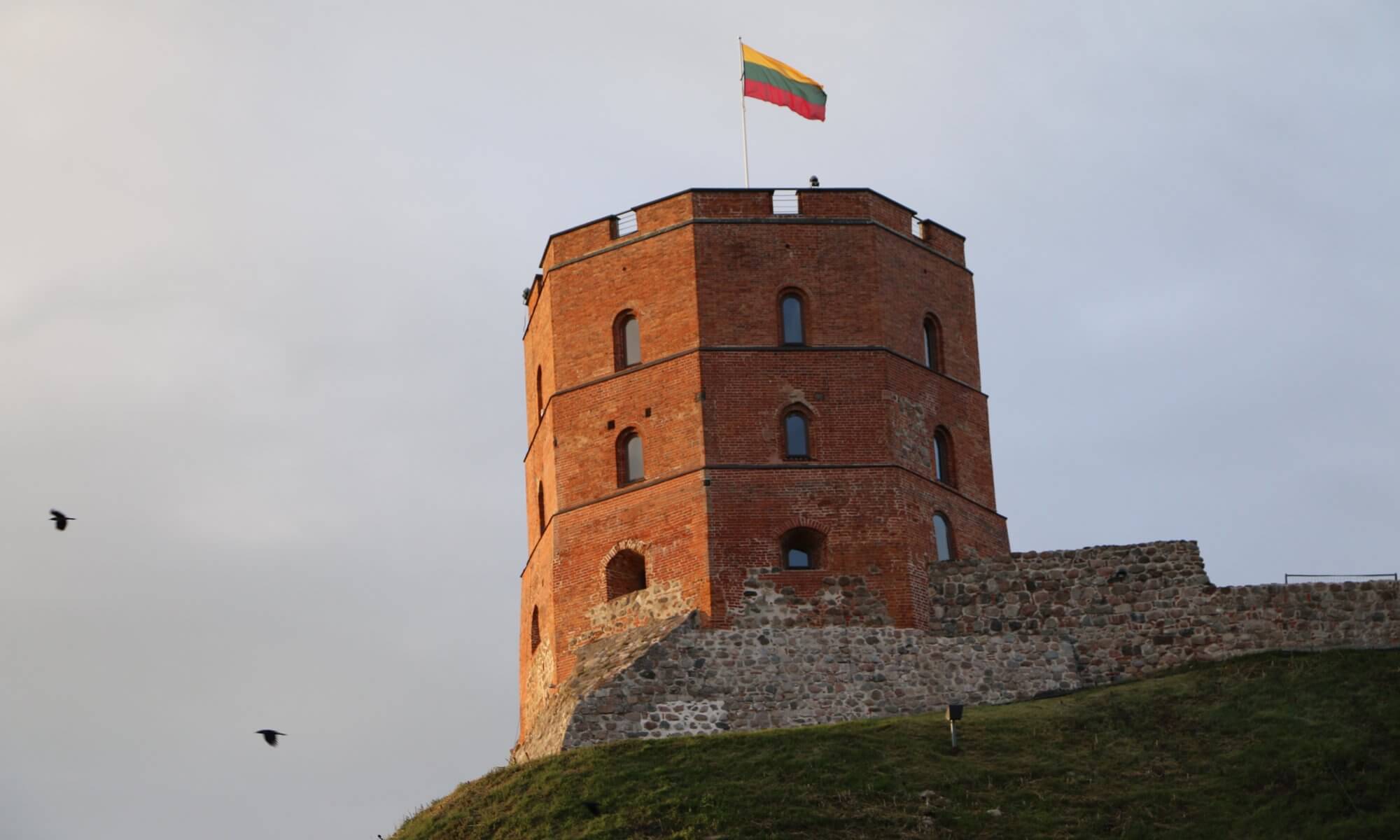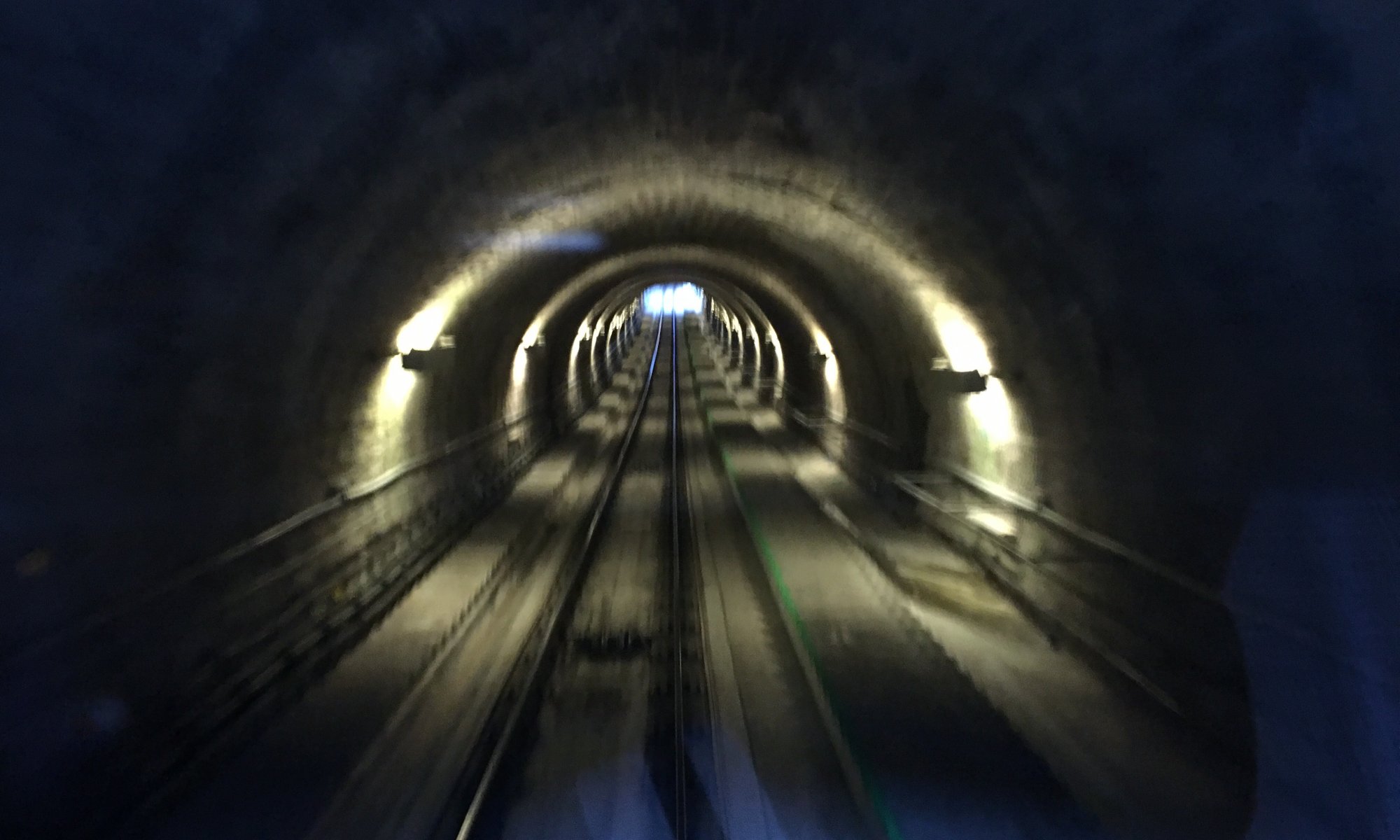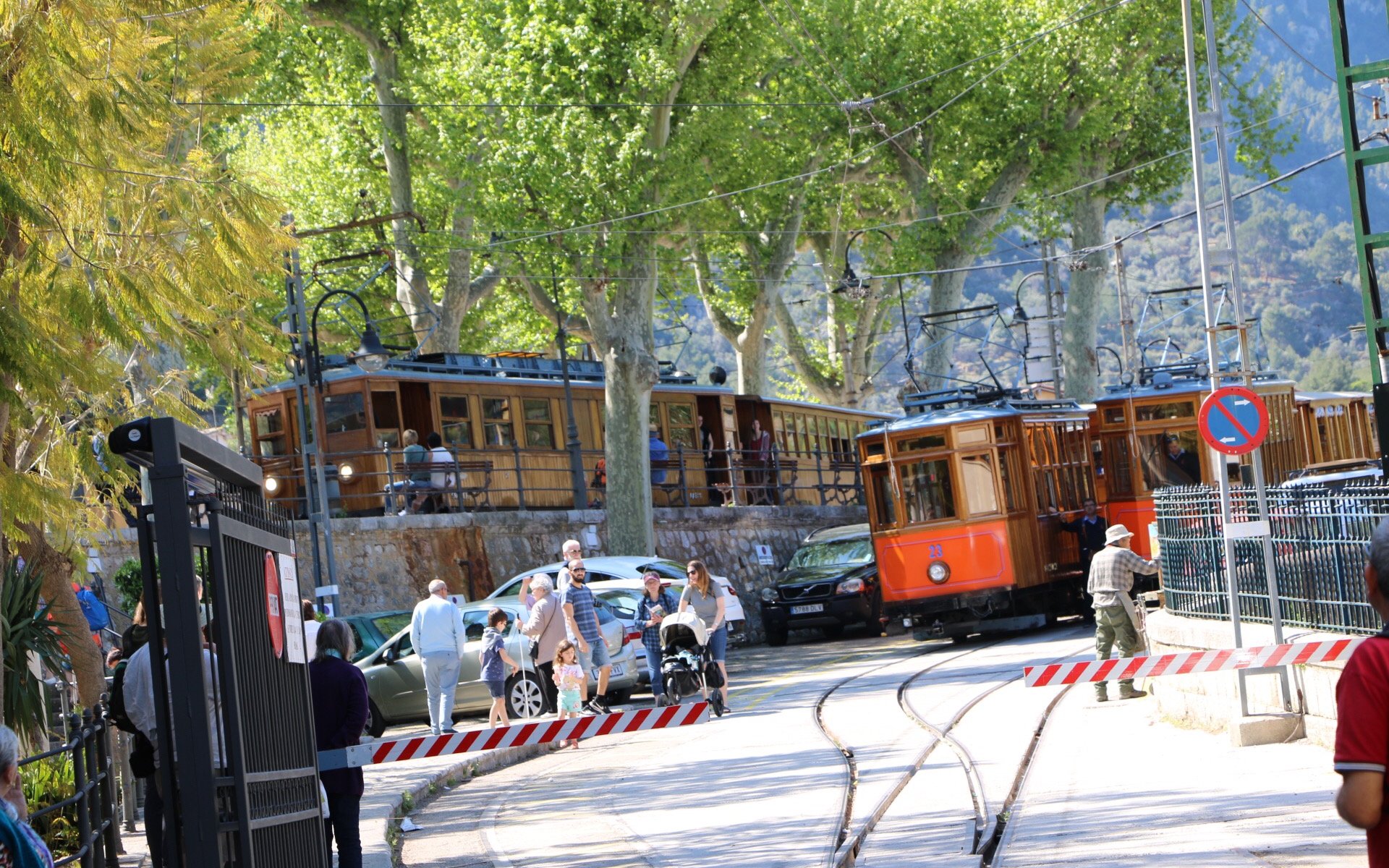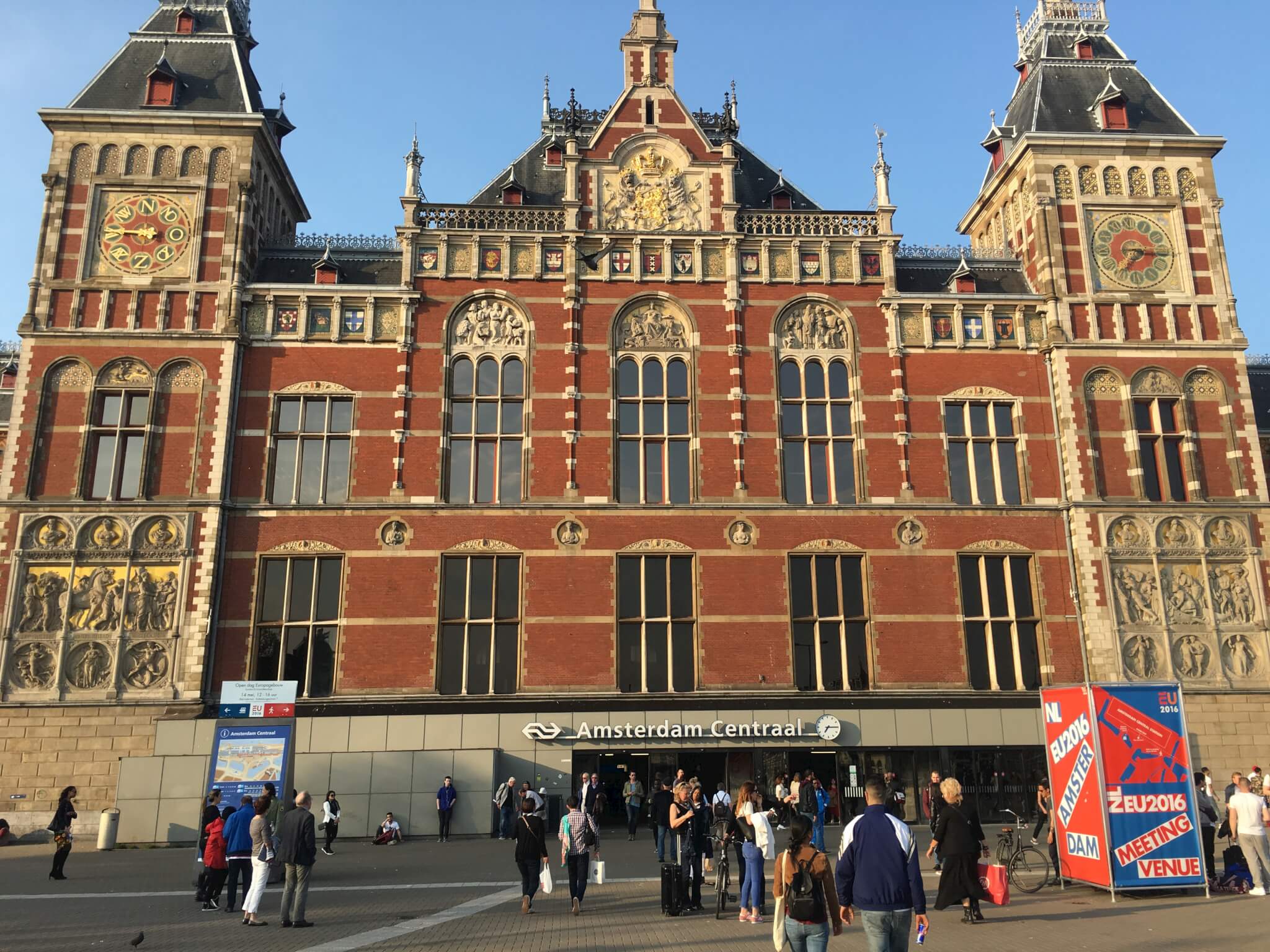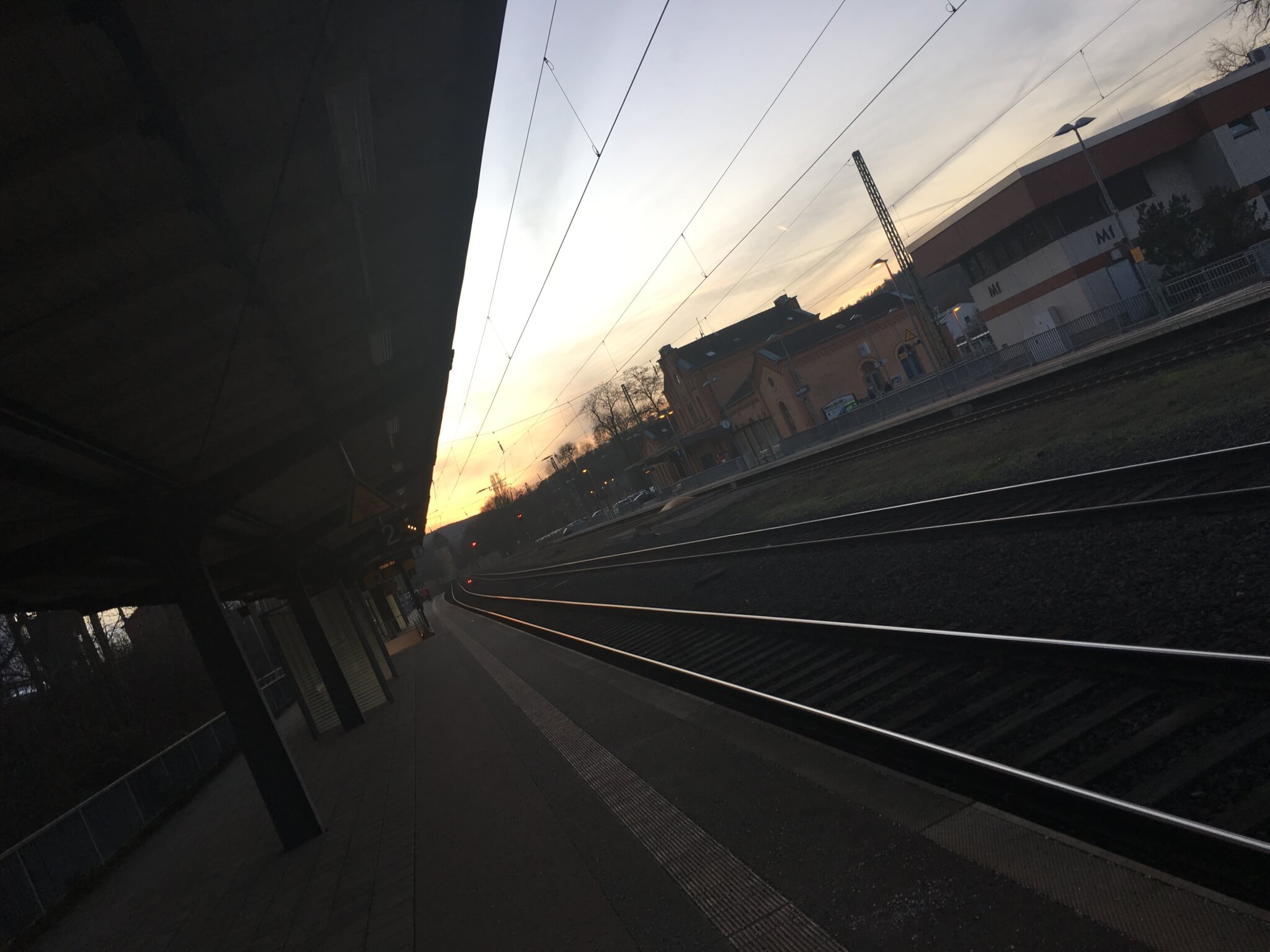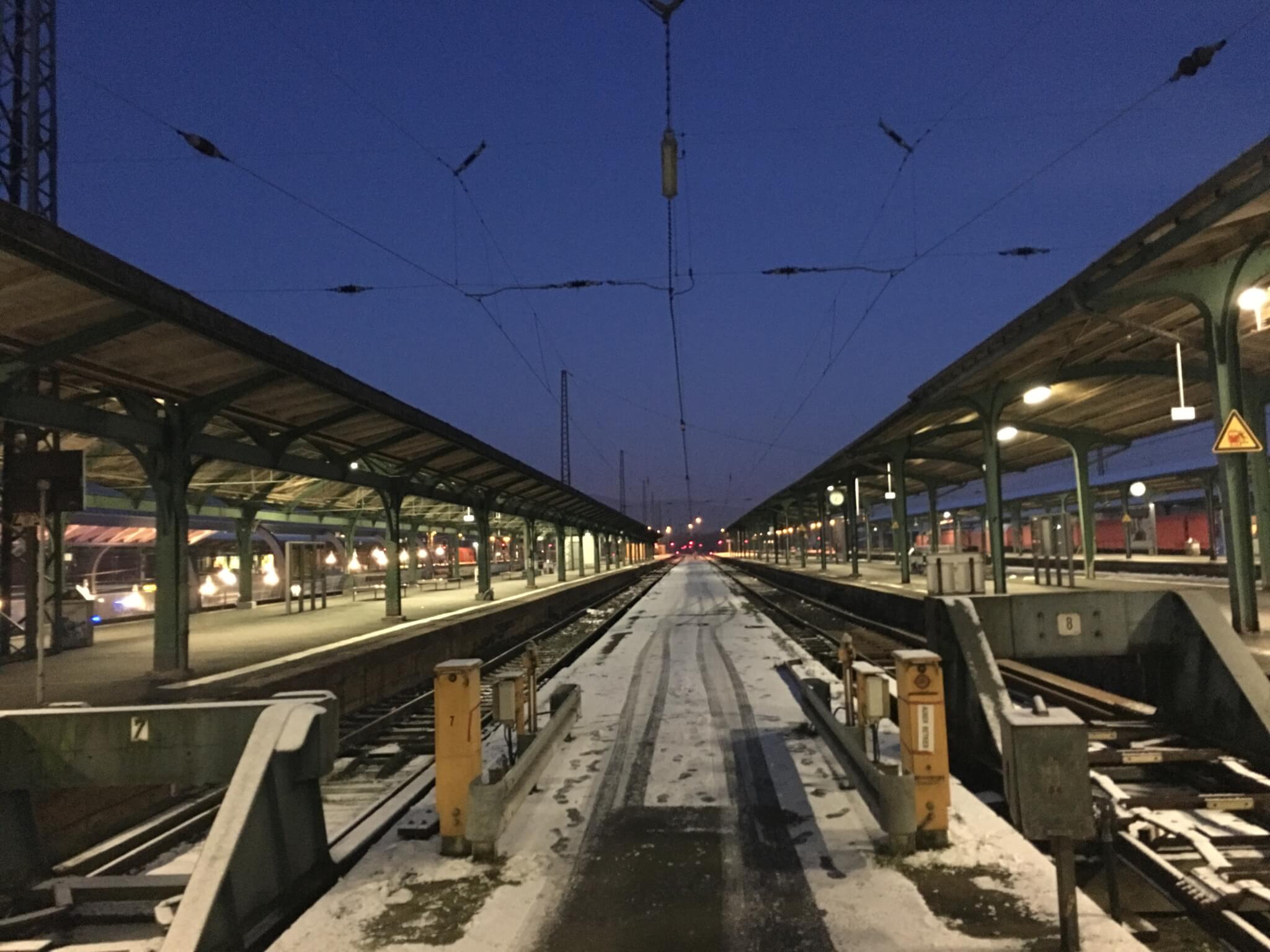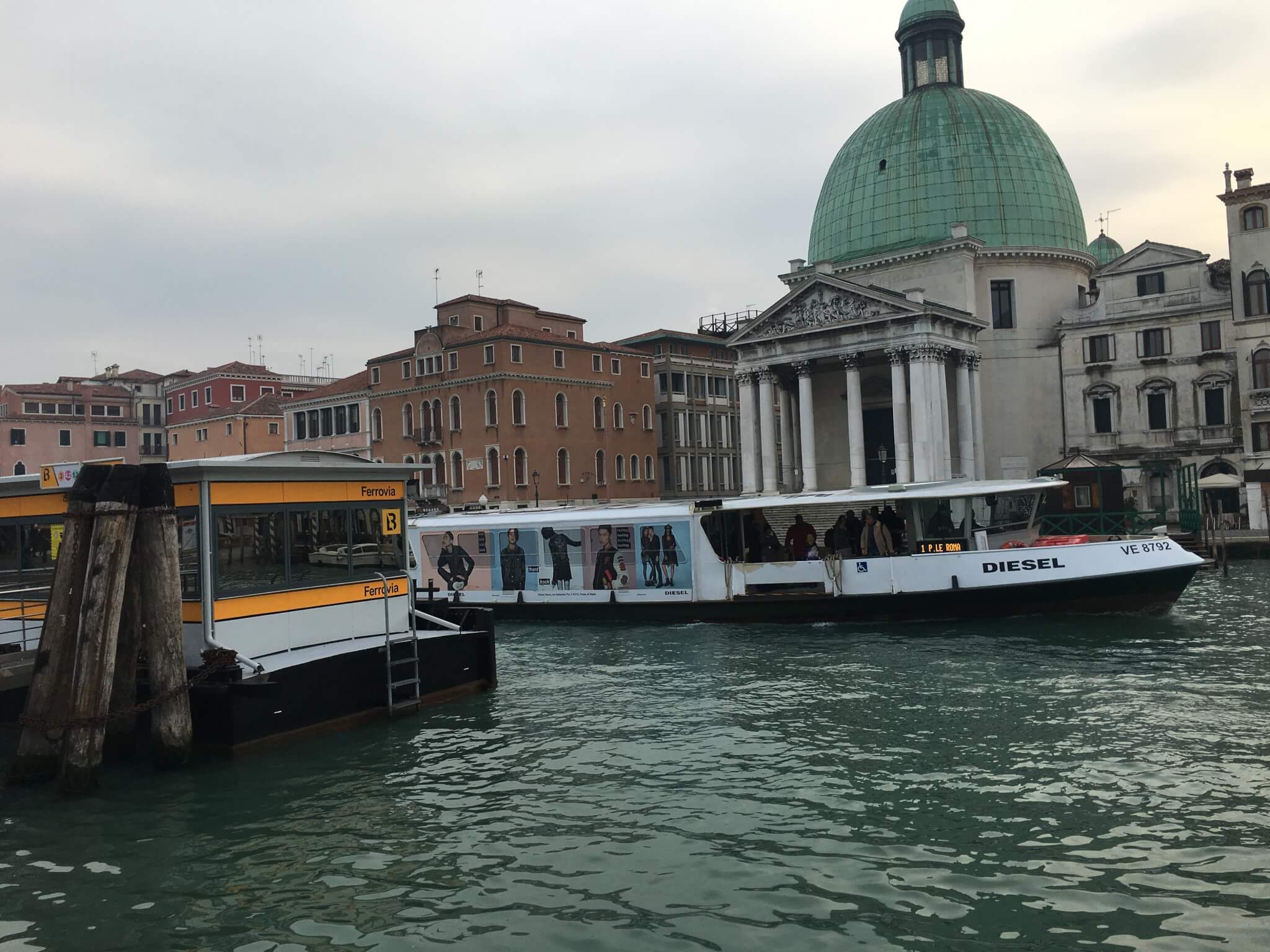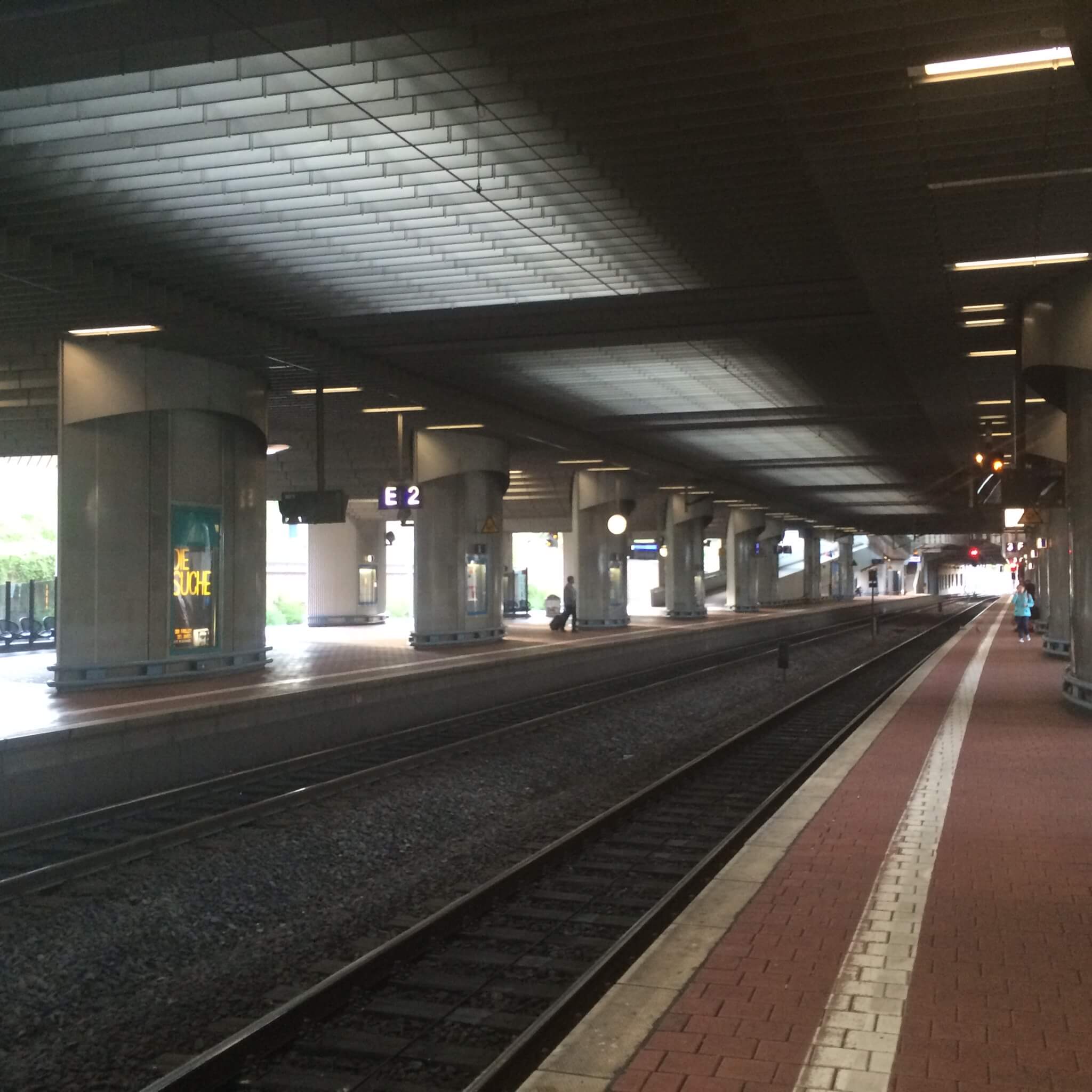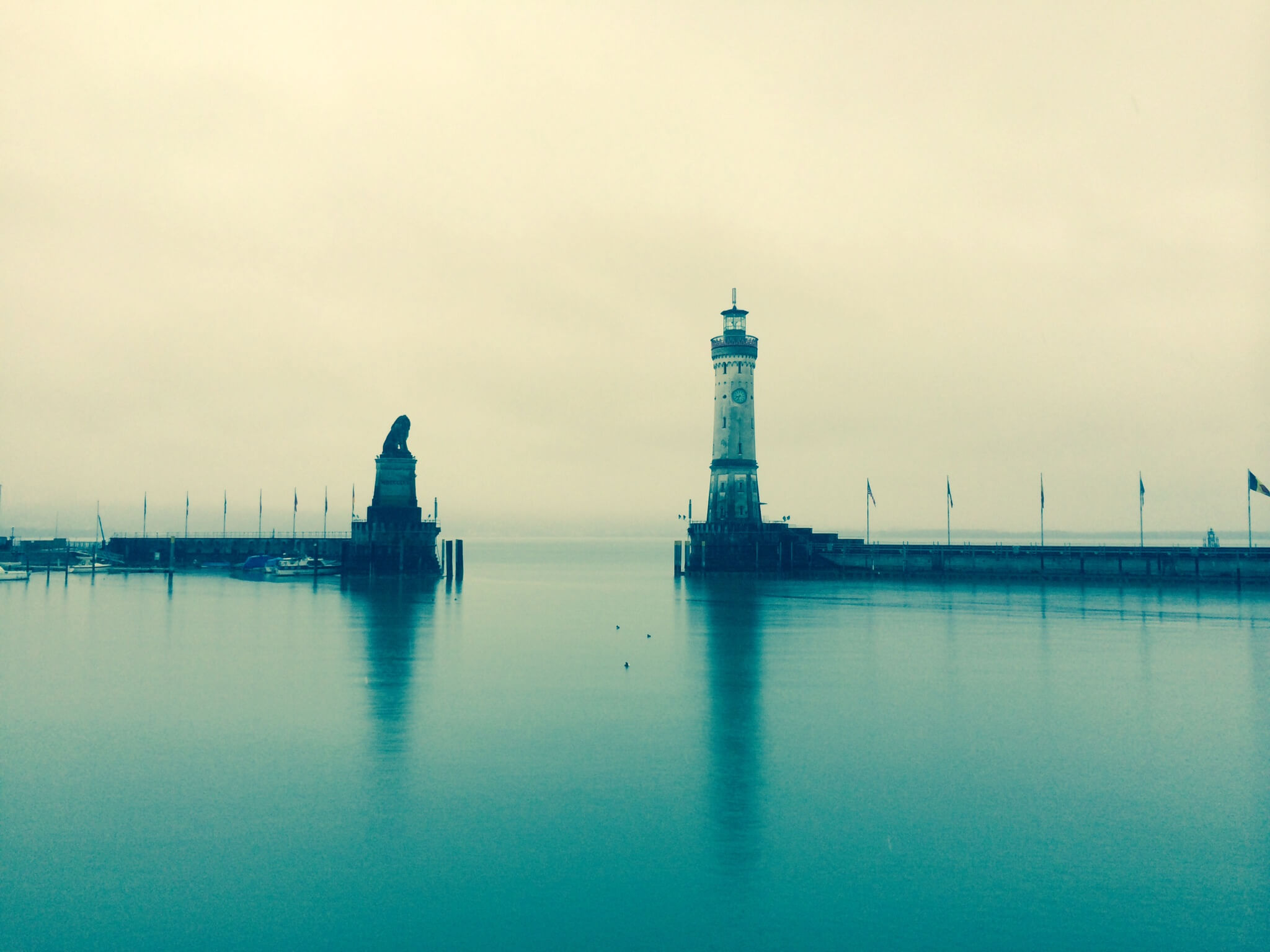When you’ve walked through the long pedestrian zone of Heidelberg, Germany you might want to have a look on the castle above the city center. If you found the Kornmarkt and turn right you will see a not so beautiful hotel and in its basement the station for Heidelberger Bergbahnen. Continue reading “Up the mountain”
Trainspotting
Sóller, Spain is a city in the Serra de Tramunata on the island of Mallorca. It is separated from the rest of the island by a mountain chain but can nowadays be reached by car through a long tunnel. But there is also another option: getting there by train. Continue reading “Trainspotting”
Amsterdam Centraal
The main railway station of Amsterdam, the Netherlands – and a special one: on both sides accompanied by water; in the north the big canels leading to the Markermeer and the North Sea; in the south the town canals leading through the city. It is a magnificient building made from red brick and inspired by the Dutch Renaissance. Continue reading “Amsterdam Centraal”
Unclear name
Sometimes life turns out to be really surprising. And as one of these surprises I’m moving to a cute small town I’ve visited numerous times in the past. One that I in fact don’t really know the correct name of: locals call it “Münden” – but as it is also called “Hannoversch Münden” (Münden belonging to Hanover) even the form “Hann. Münden” (and also misspelled “Hann Münden“) is used. Time to clarify this. Continue reading “Unclear name”
The Kulturbahnhof
The Hauptbahnhof (main railway station) of Kassel, Germany is located close to the city center at the Rainer-Dierichs-Platz. It is only a ten minutes walk through the Treppenstraße (the oldest pedestrian zone in the world) to the Königsplatz, which is a main square in Kassel. The railway station is also called Kulturbahnhof (cultural railway station) because it contains art galleries, cinemas and a cartoon museum. Continue reading “The Kulturbahnhof”
Railway station at the Canal Grande
You can access Venezia, Italy on different ways. If you don’t prefer a boat or car (which is not recommendable because of limited parking capabilities) there are two main entry points: The Piazzale Roma with the bus terminus and Ferrovia – the train station Stazione di Venezia Santa Lucia. The latter is one of my favorite train stations in the world – not because of its beauty, it became better during the last years but still it is a simply train station – what makes it wonderful is the location.
The Palace of the Winds
Confusingly, Kassel has two railway stations: Kassel Hauptbahnhof (main station, also called ‘Kulturbahnhof‘) and Kassel-Wilhelmshöhe. While Kassel main station is located at the heart of the city but is only served by regional trains, the long-distance train station Kassel-Wilhelmshöhe is at the spa-district Wilhelmshöhe in the west of Kassel.
Continue reading “The Palace of the Winds”Frankfurt am Main Hauptbahnhof
The main railway station of Frankfurt am Main, Germany is a hub I pass pretty often. As it is a large railway station that can be confusing at first, some hints might be useful. An important characteristic is, that the station is one of few dead-end-stations of major cities in Germany; others are Stuttgart, München, Wiesbaden, Leipzig and Kiel.
Continue reading “Frankfurt am Main Hauptbahnhof”Train to the shore
There are not many train stations that are directly located at the shore. One of these dead-end stations is the terminus of Lindau, Germany. It is very impractical but of historical value. If you leave a train here you only have to walk approximately 100 meters to get to the harbour of Lindau and have a wonderful view on Lake Constance.
Suspension railway
If you speak about Wuppertal, Germany with a typical German he won’t have too much in mind concerning this city. Maybe he knows the strange joke called “Der Lottogewinner” by Loriot (also called Vicco von Bülow), ending with a confused pensioner thinking that his daughter will open up a mens fashion boutique together with the pope in Wuppertal. Most probably he will only know about the iconic suspension railway leading through the town.
